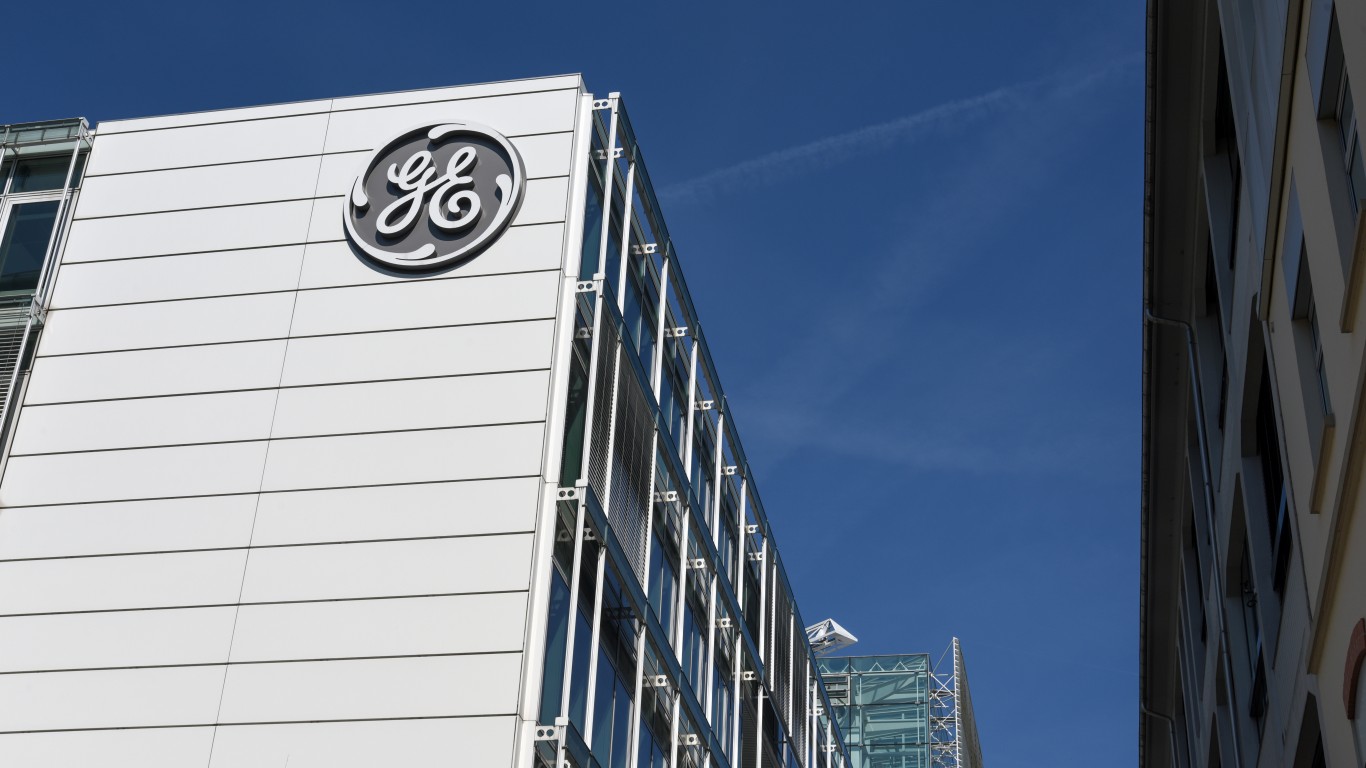

General Electric Co. (NYSE: GE) reported fourth-quarter and full-year 2019 results before markets opened Wednesday. The conglomerate reported adjusted quarterly earnings per share (EPS) of $0.21 on revenues of $26.24 billion. In the same period a year ago, GE reported adjusted EPS of $0.14 on revenues of $23.6 billion. Fourth-quarter results also compare to the consensus estimates for EPS of $0.18 on revenues of $25.77 billion.
For the full year, GE reported total revenues of $95.21 billion and EPS of $0.65, compared with 2018 revenues of $97.01 billion and EPS of $0.57. Analysts were looking for EPS of $0.62 and revenues of $92.79.
In the company’s four segments, quarterly revenues were either flat or up slightly. Power segment revenues were flat at $5.4 billion and health care revenues were also flat at $5.4 billion. Renewable energy revenues rose 2% to $8.94 billion, and aviation segment revenues rose 6% to $8.94 billion.
Free cash flow in the fourth quarter totaled $4.5 billion of a total $4.6 billion for the full year. These might be the two most important numbers in GE’s report.
The power segment posted a quarterly profit of $302 million, compared with a loss of $786 million in the year-ago quarter. The renewables posted a loss of $197 million, compared to a loss of $21 million a year ago. Aviation segment profits rose 19% to $2.06 billion, and health care profits were up 1% at $1.18 billion.
CEO Larry Culp crowed a bit:
The fourth quarter marked a strong close to the year for GE. We met or exceeded our full-year financial targets and are on a positive trajectory for 2020. … Our priorities looking forward are clear. We are solidifying our financial position, continuing to strengthen our businesses as improvement efforts build momentum, and driving long-term profitable growth. We remain committed to creating value as we continue our multi-year transformation.
For 2020, GE expects revenues from its four segments to grow organically in the low-single-digit range. Adjusted profit margin growth for these industrial segments is forecast in a range of zero to 75 basis points, and adjusted EPS for the year is forecast in a range of $0.50 to $0.60. Free cash flow from the industrial segments is forecast at $2 billion to $4 billion.
The outlook includes the disposition of BioPharma and reduced cash from Baker Hughes. In 2019, BioPharma generated about $1.3 billion in cash and $1.5 billion in profit, while Baker Hughes kicked in $350 million in dividend payments. Regarding its aviation segment outlook the company said:
This outlook is also dependent on the 737 MAX’s return to service, which GE is planning for in mid-2020, in line with Boeing. GE expects to offset these effects through performance improvements and reduced non-operational headwinds.
Analysts have estimated first-quarter EPS at $0.14 on revenues of $21.39 billion. For the full year, analysts expect EPS of $0.66 on revenues of $91.4 billion.
The best news from GE is that there were no more charges related to its long-term care insurance and that the company plans to remain “focused on de-risking GE Capital, including improving its leverage profile.” GE Capital posted $6 million in earnings for the fourth quarter, compared with a loss of $177 million in the same period last year, and the net loss for the year totaled $338 million, compared to a net loss of $2.16 billion in 2018. GE Capital dumped assets valued at about $12 billion in 2019, topping its target reduction of $10 billion.
The earnings report had no really bad news, although full-year revenues came up a bit short, as did the 2020 EPS guidance. The rise in cash flow, however, apparently forgives myriad lesser sins.
GE stock traded up about 3.8% in Wednesday’s premarket, at $12.17 in a 52-week range of $7.65 to $12.24. The consensus price target on the stock was $11.27 before the results were reported. GE pays a quarterly dividend of $0.01, and its annual dividend yield is 0.35%. Could investors be hoping for a bit more now that cash is flowing more freely?
Thank you for reading! Have some feedback for us?
Contact the 24/7 Wall St. editorial team.
 24/7 Wall St.
24/7 Wall St.


